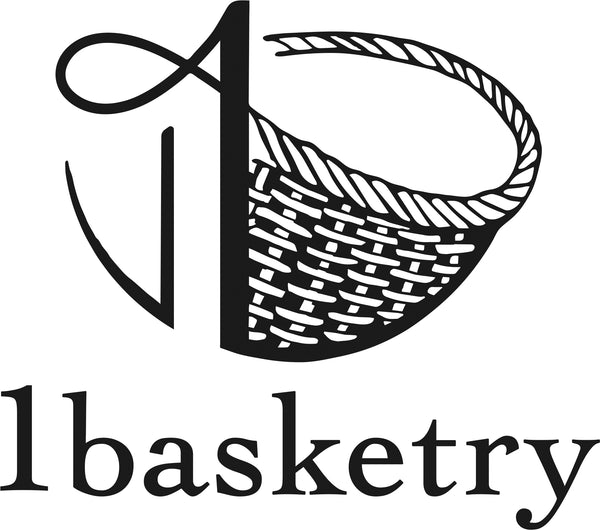Antique – Tea Sieve 750407-1
Antique – Tea Sieve 750407-1
Couldn't load pickup availability
- Size / Weight
- Approx. Ø 22.05″ × H 4.33″ / 15.87 oz
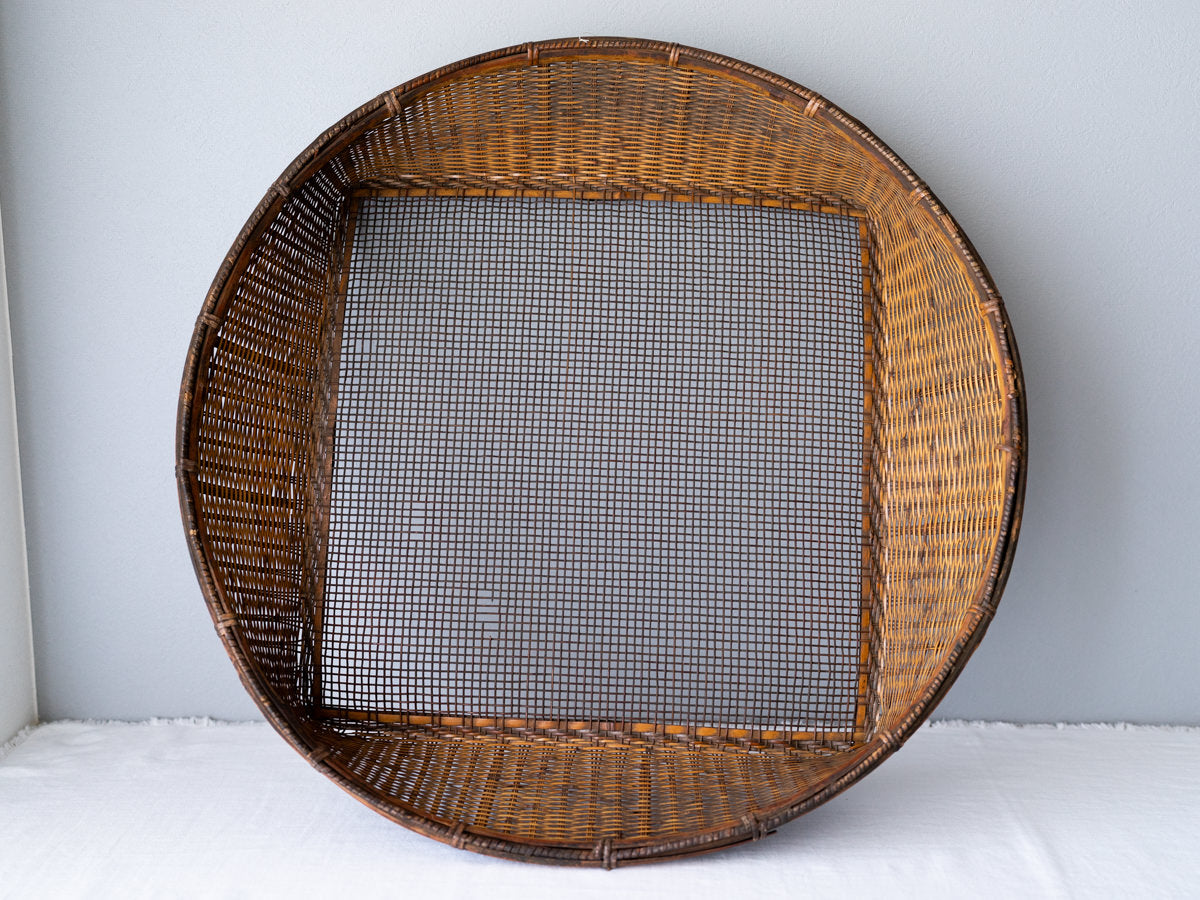
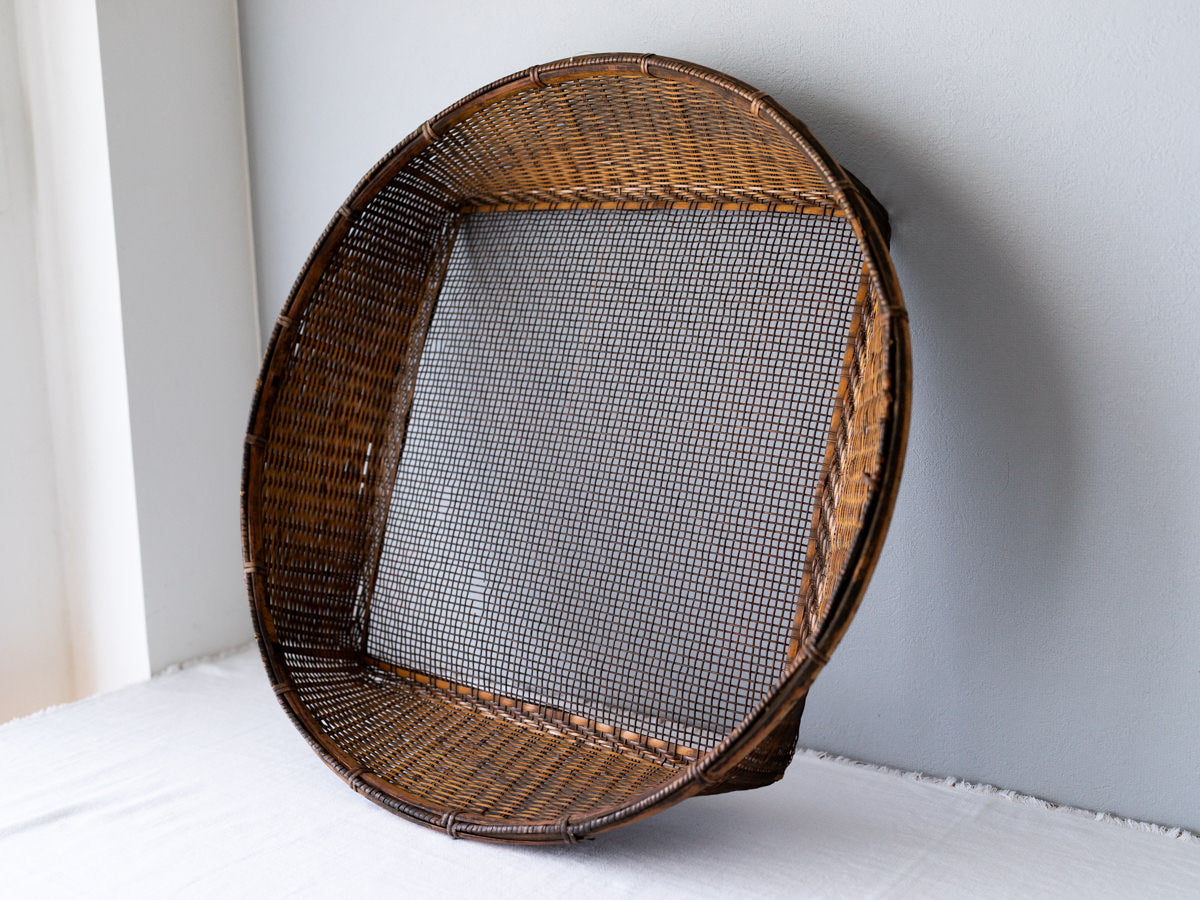
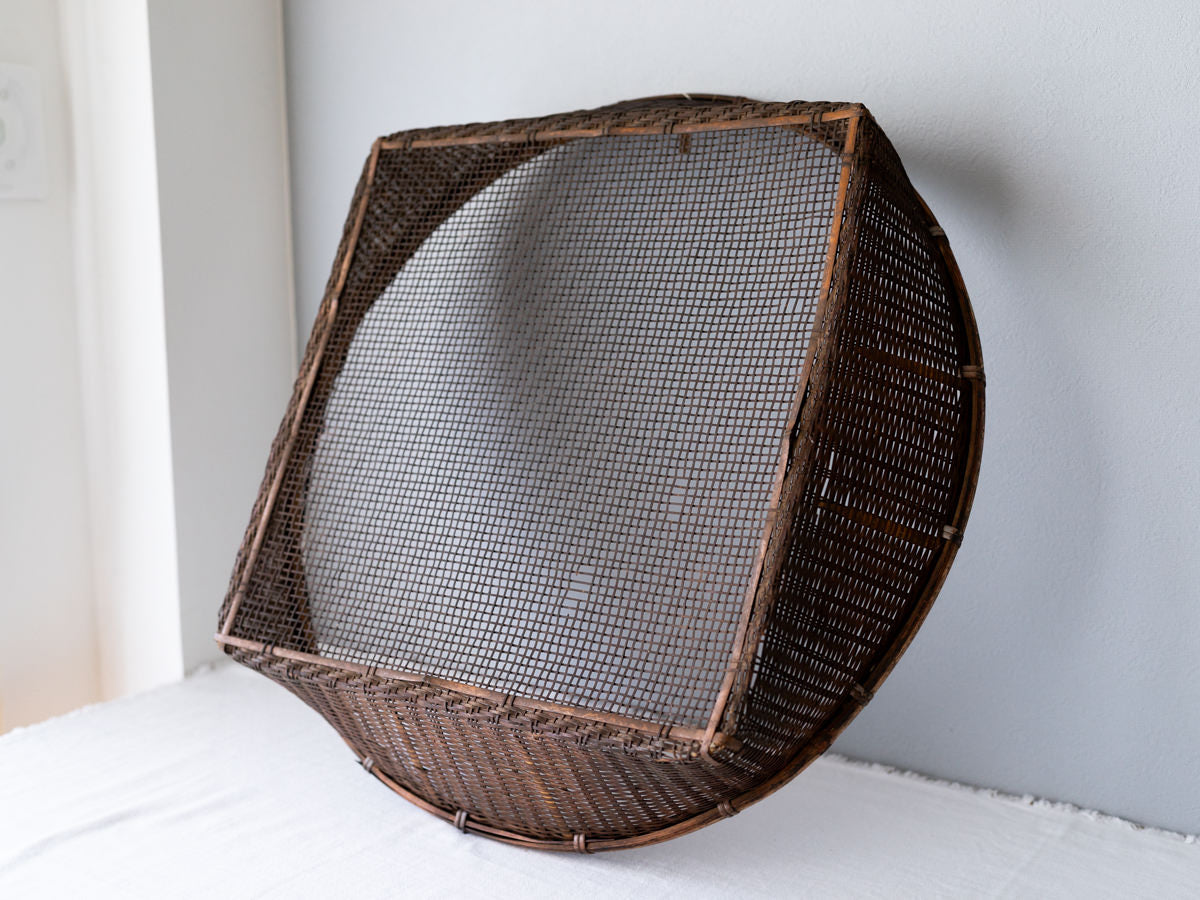
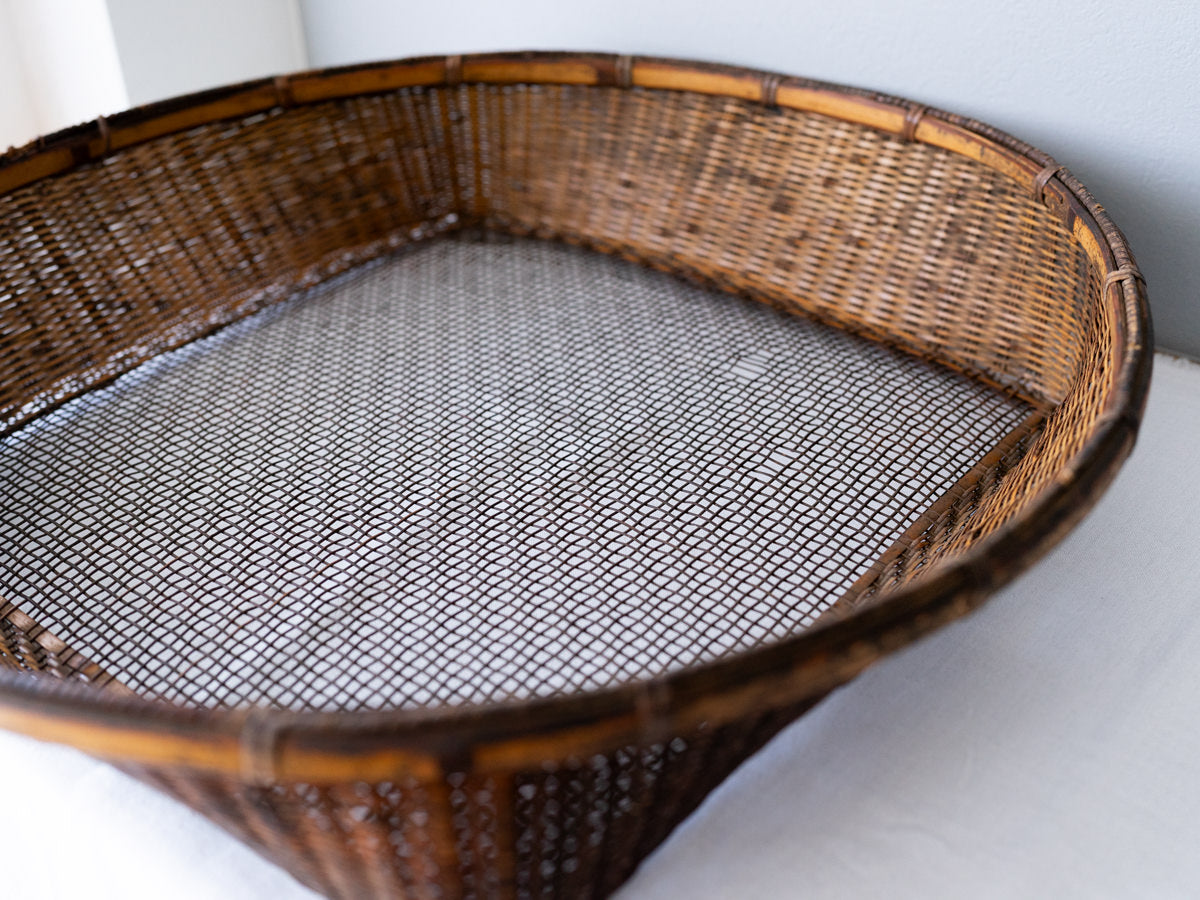
-
Note
The sizes shown above are the middle of the total quantity of items we receive, and are only a rough estimate.
Also, external dimensions are provided.
Some of them may be 2-3 cm (1inch) larger or smaller than the sizes indicated because they are handmade using natural materials.
If you have a specific place in mind where you would like to store the item, please order it with enough space to spare.
Also, the shape, texture, and color of each item will vary.
Please be aware of this before ordering. -
Caution
Please be careful not to damage your body or clothing with sprinters.
For all materials, please store in a well-ventilated place and avoid storing in cupboards, etc. as much as possible.
When storing, it is best to avoid direct sunlight and to place them in an elevated place where moisture does not accumulate.
If the product gets wet from rain or water, wipe it off with a dry cloth and dry it well in the shade or indoors in a well-ventilated location.
Regular brushing with a scrubber or brush is recommended to prevent dust accumulation.
-
Shipping
We deliver products worldwide. Shipping costs are automatically calculated according to your location and what you order.
We will ship with care and attention.You can see shipping policy here
-
How to care
These products are made from all-natural materials and if taken good care of they will last for dozens of years. Products made of natural materials also change beautifully over time.
Check "How to care" page here

This is an antique tea sieve made of bamboo.
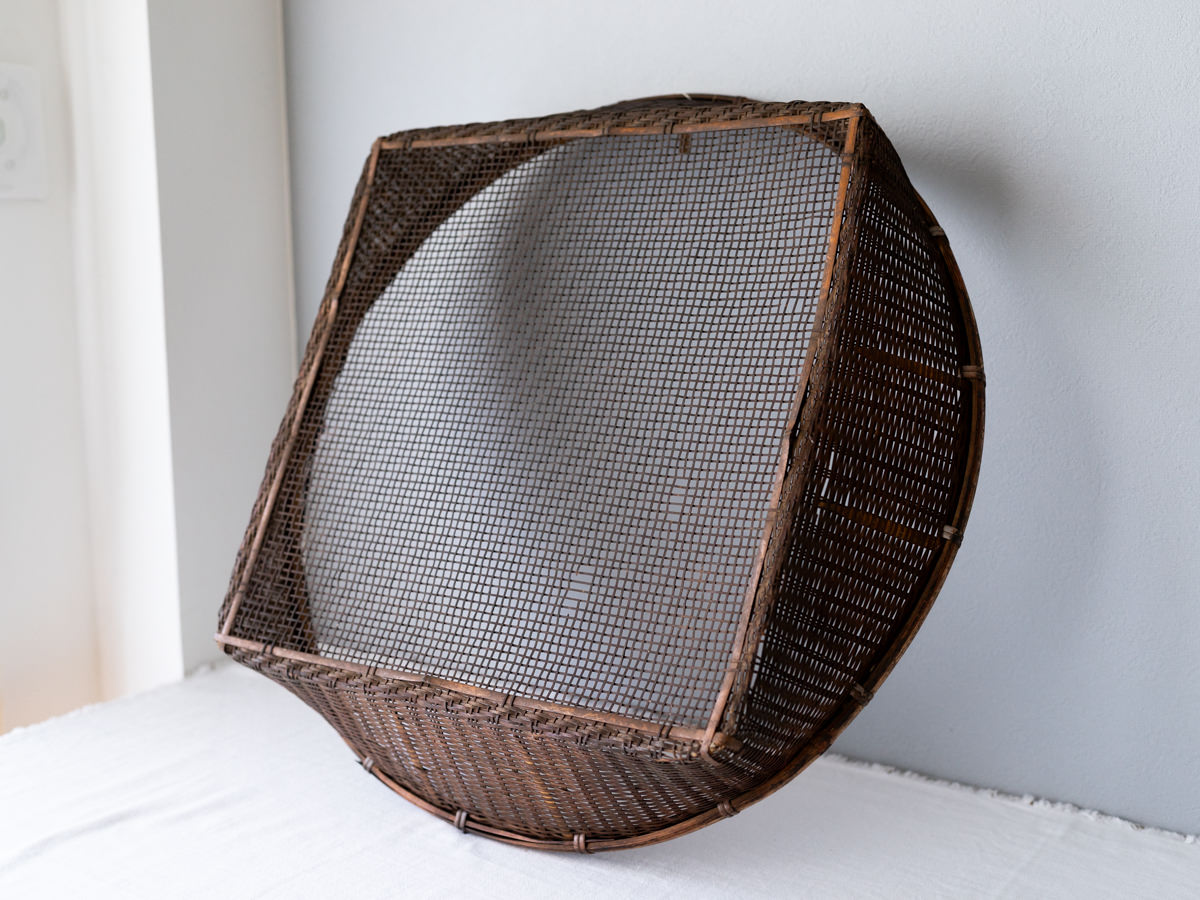
Today, sieves are commonly made with wire or stainless steel, but in the past they were crafted from bamboo and rattan.
After tea leaves were harvested, steamed, rolled, and then dried, they became aracha (coarse tea).
At this stage, tea sieves like this were used to sort the leaves by size.
Also known as cha-dōshi (tea strainer),
they were made more finely and carefully than grain sieves such as those used for rice or wheat.
The typical form had a square base with a round mouth.
Depending on the fineness of the weave—from coarse No.1 to fine No.16—they were used for different teas,
ranging from bancha and sencha to gyokuro and matcha.
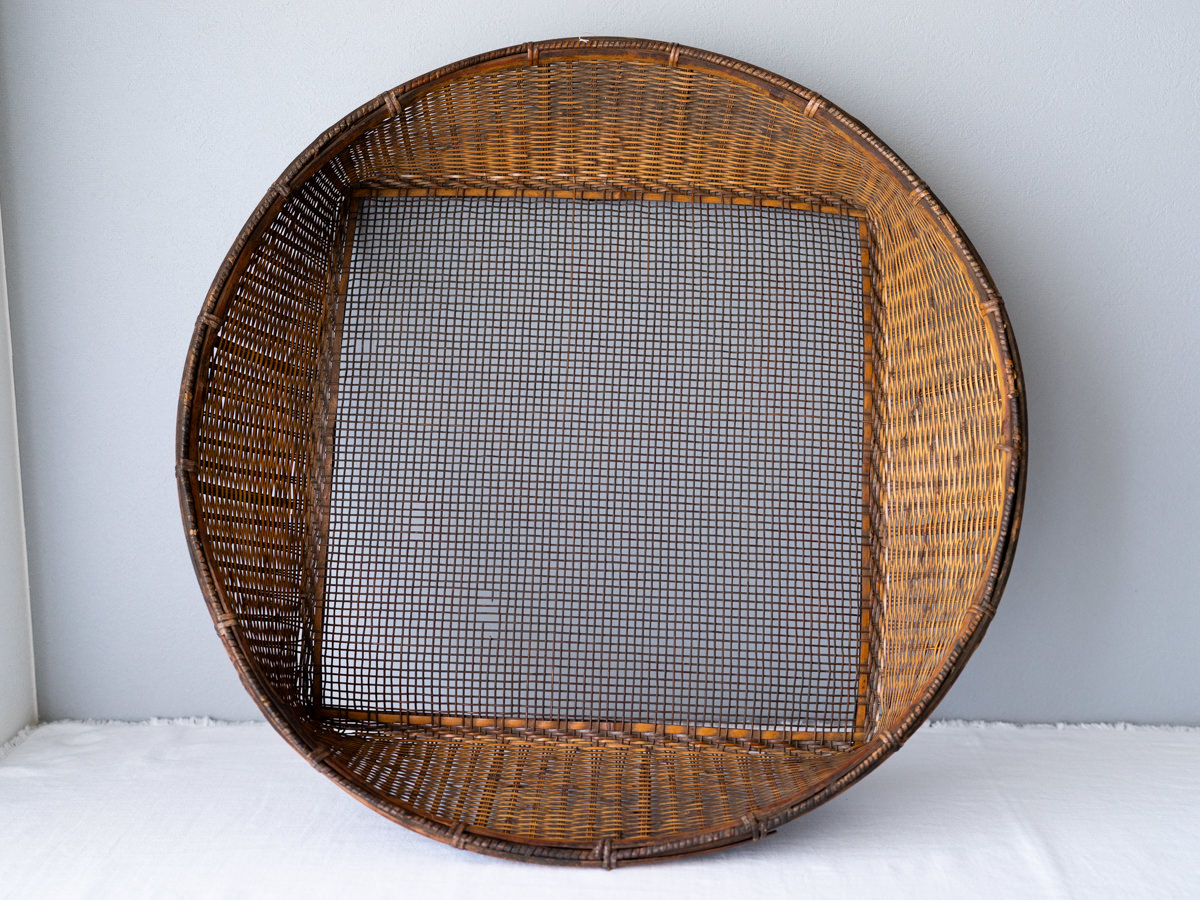
This piece is thought to date from the post–World War II period.
There are some breaks along the rim and base, as well as stains from age,
so it is better suited for display or interior use rather than for preparing tea.
Even today, some tea merchants say that such sieves remain indispensable tools.
Please enjoy the fine and delicate woven pattern that is unique to a tea sieve.
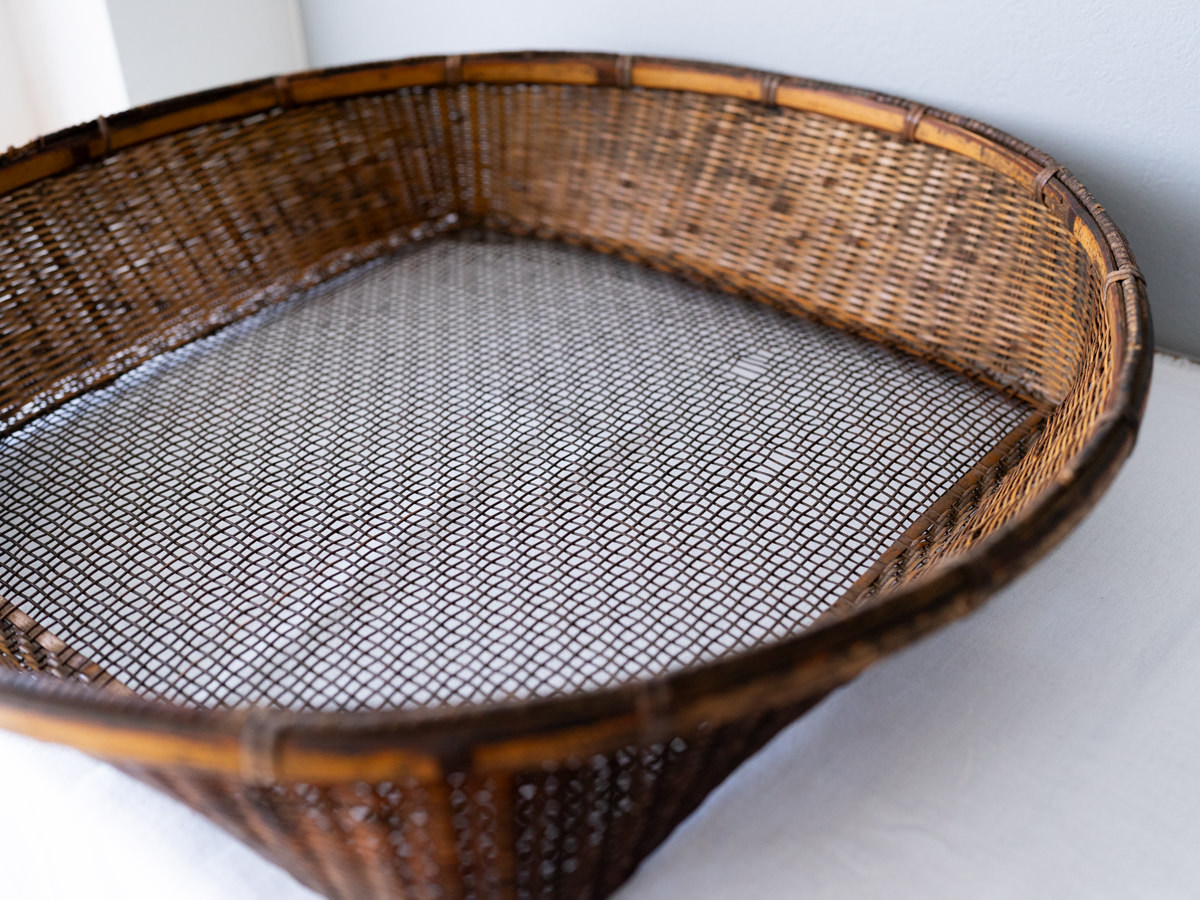
Please note:
This item ships from Japan.
As the buyer, you are responsible for any import duties, customs fees, or local taxes that may be charged in your country.
These costs are not included in the item price or shipping cost.
Please check with your local customs authority if you are unsure about any potential charges before placing your order.
